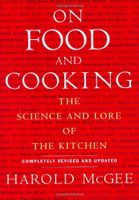Advertisement
Low Oven Temperatures
By Harold McGee
Published 2004
At low oven temperatures, below 250°F/125°C, the moist meat surface dries very slowly. As moisture evaporates, it actually cools the surface, so despite the oven temperature, the surface temperature of the meat may be as low as 160°F/70°C. This means relatively little surface browning and long cooking times, but also very gentle heating of the interior, minimal moisture loss, a relatively uniform doneness within the meat, and a large window of time in which the meat is properly done. In addition, a slow inner temperature rise to 140°F/60°C—over the course of several hours in a large roast— allows the meat’s own protein-breaking enzymes to do some tenderizing. Ovens equipped with fans to force the hot air over the meat (“forced convection”) improve surface browning at low roasting temperatures. Low-temperature roasting is suited to both tender cuts, whose moistness it preserves, and tough cuts that benefit from long cooking to dissolve collagen into gelatin.


